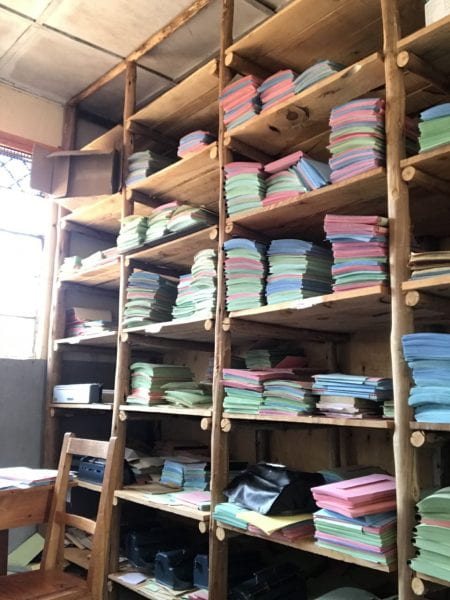


Meeting the students has been the highlight of this project thus far. For since its conception, the project has been an idea, more or less. Even if it is true that the students were the origin of the conception. Indeed, it all began with a short documentary that detailed the life of the students at their high school and the joys and challenges of their academic and social life. The details in the documentary included a call for assistance which moved me at the time even though I could not then conceive of any clear avenue for such assistance. It was a bit later that the call for applications for the Davis Projects for Peace came and the thought of the students’ lives resonated with the call.
The school compound was lively as we reached the place, I and Adelin, a friend who works with disability related organizations in Burundi. The liveliness of the place was a bit of a surprise for a weekday, for the usual atmosphere of a high school in Burundi is quiet and contained. But we soon learned that the students were preparing for their final exams and thus the commotion. As we walked through the compound, we met some students that Adelin works with, two girls with physical disability and a couple boys with visual disability. We exchanged greetings. The high school is a national laboratory for a national education project of inclusive learning. The idea is to provide education opportunities for students with various disabilities within the setting of the available educational structures. This being the first such initiative at the high school level, the school functions as a laboratory since the inclusive learning project is in its trial phase. The goal is for the same model of learning to be moved to other educational institutions. Prior to this, students with various disabilities attended their own specialized schools.
We first met the school authorities to introduce the Davis Project. The principal of the school was very receptive and enthusiastic about the idea and expressed gratitude. He then graciously introduced us to the inclusive learning system and how it works at his school. Then, he later introduced us to the students and the teachers that assist them on a daily basis. The teachers’ tasks include, among other things, taking notes in braille for students, translating tests and exams, and advocating for the students in general.
The students were a wonderful group to speak to and their enthusiasm about the project further solidified the importance of the project. We spoke with them about the goal of the project, listened to accounts of their daily life and laid out the plan for the next two months with them. We asked for their input as well. We left feeling useful concreteness about the project and its potential impact.